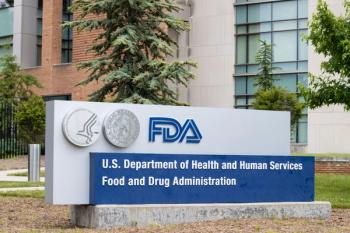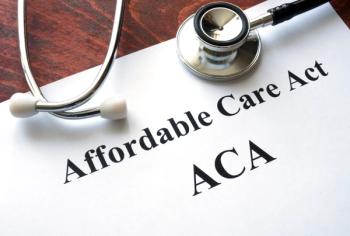
What Happens When the Uninsured Get Transferred From Private to Public EDs?
A majority of patients—most uninsured—presenting to a public hospital emergency department (ED) after treatment for the same complaint in another local, but private, ED were indirectly referred to the public one without transferring paperwork or records, incurring repeat testing and raising patient anxiety, according to a study published online ahead of print in the January 2018 issue of Academic Emergency Medicine.
A majority of patients—most uninsured—presenting to a public hospital emergency department (ED) after treatment for the same complaint in another local, but private ED were indirectly referred to the public one without transferring paperwork or records, incurring repeat testing and raising patient anxiety, according to a
The study suggested that duplicate visits and diagnostic testing create additional costs for both the patient and the public and can unnecessarily strain resources at the public hospital, in addition to increasing radiation exposure to patients. The study documents the difficulty uninsured patients have in accessing needed healthcare and the accompanying emotional and physical toll.
This mixed-methods study conducted over a 10-week period during 2016 in a large public hospital ED in Texas prospectively surveyed patients seen in another ED for the same complaint. Selected patients presenting with fractures were then enrolled for semi structured qualitative interviews, which were audiotaped, transcribed, and independently coded by 2 team members.
The findings support the need to increase transparency and align incentives so that efficient, cost-effective, high-quality, patient-centered care can be provided for all patients, said the study, published in the journal of the Society for Academic Emergency Medicine.
The practice of indirect referrals by nonpublic EDs and their affiliated physicians are prevalent in communities with a public hospital option, the authors wrote.
In this study, most hospitals making indirect referrals (the practice of sending a patient to another facility without a formal transfer policy)
were nonprofit hospitals.
Despite receiving over $24 billion in tax benefits, nonprofit hospitals spend only 3% of their budgets on charity care, the authors wrote. The Affordable Care Act includes a community benefit provision that seeks to increase requirements for nonprofit hospitals, but the law's future is uncertain.
This study wanted to explore:
- Whether patients making a repeat ED visit are self-referred or indirectly referred from the other ED
- The patients' perspective on the health, social, and financial consequences of these duplicate ED visits.
In the study, 143 patients were identified as being recently seen at another local ED for the same complaint prior to presenting to the public hospital; 94% were uninsured and 61% presented with fractures. A total of 27% required admission at the public ED and 95% of those discharged required further outpatient follow-up.
Fifty-one percent of patients completed a survey and qualitative interviews were conducted with 23 fracture patients. The authors found that 53% of patients reported that staff at the first hospital told them to go the public hospital ED, and 23% reported referral from a follow-up physician associated with the first hospital. In addition, 73% reported receiving the same tests at both EDs.
Interview themes identified multiple health care visits for the same injury, concern about complications, disrespectful treatment at the first ED, delayed care, problems accessing needed follow-up care without insurance, loss of work, and financial strain.
While EDs must comply with the Emergency Medical Treatment and Labor Act (EMTALA) and treat patients regardless of their ability to pay, there are limitations. Before EMTALA, patients were sent in unstable condition to public, “safety-net” hospitals, and transfer requests explicitly cited a lack of insurance. EMTALA sought to ban this practice by requiring hospitals to stabilize emergency medical conditions without considering financial status. However, stabilization does not mean full treatment or follow-up care of a medical condition.
"This paper elegantly illustrates the extent that private hospitals will go to avoid caring for patients whom they believe won't benefit their bottom line. These hospitals and their doctors have carved out a precise set of loopholes and workarounds to important patient-protection laws dating back 30 years,” Harrison Alter, MD, MS, FACEP, associate chair for research in the Department of Emergency Medicine at Highland Hospital and executive director of the Andrew Levitt Center for Social Emergency Medicine,
While the majority of indirectly referred patients were “stabilized” at the first ED per EMTALA requirements and unlikely to suffer serious harm from duplicate testing, dual treatment, or delays in care, they did not experience high-quality, efficient, equitable, patient-centered, or timely care. Many patients made multiple time-consuming health care visits in addition to the two ED visits, missing additional days at work, before they received definitive care.
The study said since EMTALA sanctions are typically applied to EDs, this exploratory study reveals that a short observation period or admission may be used on occasion to avoid EMTALA obligations. As a result, indirect referrals are typically EMTALA-compliant, occurring after stabilization and/or admission, and only 15 providers per year on average have been disciplined (none were emergency physicians) through the program in the past decade.
It is unknown how communities that do not have a public hospital care for their uninsured populations. The authors wrote that potential policy solutions include access to a community-wide health information exchange that shares radiographic images and other testing results for patients seeking care in multiple health systems, tax benefits or other financial incentives for both physicians and hospitals to encourage care of the uninsured population, strengthening of EMTALA requirements to include definitive treatment, and improved access to health insurance through expansion of Medicaid or other legislation.
Reference
Medford-Davis, L, Prasad, S, Rhodes, KV. “What do people do if they don't have insurance?”: ED-to-ED referrals. Published online December 27, 2017. Acad Emerg Med 10.1111/acem.13301
Newsletter
Stay ahead of policy, cost, and value—subscribe to AJMC for expert insights at the intersection of clinical care and health economics.








































